To recap, I think The Glenlivet 12 year is slightly better than its similarly-priced rival Glenfiddich 12. On the flip-side, my impression of The Glenlivet 15 year is of moderate improvement that doesn’t justify its price jump. Today, we look at The Glenlivet 18 year, one of the cheapest scotches on the market to have reached 18 years of age. I enjoyed its nemesis, Glenfiddich 18, and I enjoyed the price I got it for at Costco even more. Let’s see how this one fares.
Oddly for The Glenlivet, which staunchly uses ex-bourbon barrels for its maturation, the 18 contains sherry-matured spirit at 12-13% of its volume. Glenlivet does not add coloring agents, but does chill-filter its malts. Finally, this entry in the Glenlivet range gets a bump up in ABV to 43%. About time.
Nose: Hint of plum, but otherwise little sherry influence. Some vanilla, but not much wood. Where’s the green apple?
Palate: Nice thick body. Creamy, not oily. Golden raisins, fresh green figs, sugar cookies.
Finish: Not as smooth as I’d have thought for this age. Vanilla again, and some small amount of bitterness. Anise.
With Water: Brings out coconut on the nose, and some nice fresh banana. I actually like this banana – it smells fresh and clean. The water thins the body somewhat, and ups the acidity, but kills the palate in the process, making it watery. Skip the water.
Overall: The nice thing about the 12-year is the interesting fresh elements of green apple. The 15 also has some of that, but by the age of 18, it’s mostly gone. In its place isn’t woodiness, or sweetness, or even much complexity. I’m not sure what was happening in the barrel during those 6 extra years, but it wasn’t doing much to elevate this casual standard whisky, alas. That said, it’s hard to beat a decent, drinkable 18 year for under $80. That pricing strategy is the reason I enjoy the 12-year, so why not enjoy the 18 for the same reason? Keep in mind that the Glenfiddich 18 has more flavor and can be even cheaper (I once found it at Costco for $44 a bottle!). Shop accordingly.

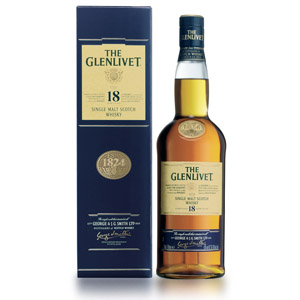


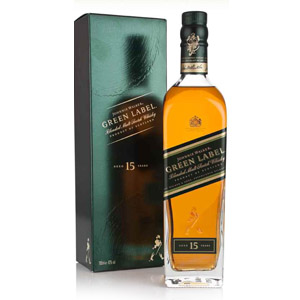
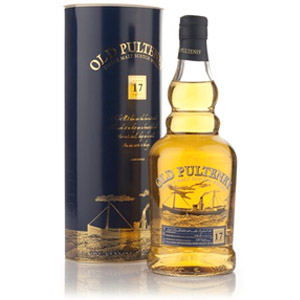
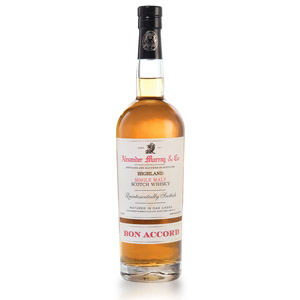
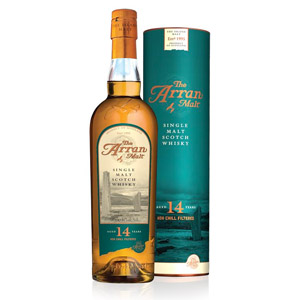

Well said, I was expecting a bit smoother of a finish as well but overall I’m happy I tried it. It’s always a win if it was a gift! Heh
I had a dram after a nice dinner out last night. I expected a much smoother finish from an 18-year-old. Pleasant enough and well balanced, but not nearly as smooth as Dalwhinnie 15.
The ultimate question is, based upon price, whether a scotch of this type is justifiable when it sales for $99.00, approximately, as it does in the great Commonwealth of Virginia. As a question, what is your thoughts of this one, at the price of $99.00 when one can buy the 12 year Glenlivit, at about $39.00 on sale, or the Old P. 12 year, which sales about the same price as the Glenlivit 12 year, in here Virginia. Ultimately, does price dictate, alone, the buying pattern, or should one sacrifice a bit, on the price, for what may be a bit more in quality. Or should one say, that for the price, the 18 years are not quite that special, and so, for for the reliable 12 year, and play is safe, if on the cheap. Thanks.
Hi Robert,
I believe your question is, is Glenlivet 18 (or other “inexpensive” 18 year-olds) worth $99 when the younger products are $40? This might help a bit: //scotchnoob.com/2013/08/26/older-is-not-always-better/ but there is no exact answer to your question for everyone. For many single-malt drinkers, the 12 year-old malts get “boring” and they start looking for improved quality or more complexity or maturity. For a first-time scotch drinker, I would say that a $99 scotch would not be worth the price. For someone who’s been drinking $40 – $50 malts and is starting to look for something new or special, a $99 scotch makes a good “special occasion” malt. Even after years of drinking single-malts, I would never drink a $99 scotch on a daily basis. Most of the malts in my cabinet are $50 ish.
What exactly is a “dram?”
Tom, great question. I spent an embarrassing amount of time last year trying to discover what exactly the metric equivalent of a “dram” is. Technically, the word is used in some fields to indicate a specific volume of liquid, but it’s something like 1/8th of a teaspoon (don’t quote me on that) – at any rate, clearly not the “dram” we’re talking about. The best answer I found is that the word is used in the UK often to mean a socially-acceptable (in context) quantity of straight spirit, without any agreed-upon quantity. A Scotsman might request a “wee dram” in the same way that we might ask for “just a tiny piece of cake” – we probably don’t really mean tiny, we’re just being polite.
When I use the word, I’m generally referring to the amount of whisky (or whatever) that I would pour myself to enjoy as a drink. This is about the quantity that comes up to the widest point of a Glencairn glass, roughly 2 oz. I’ve also heard people refer to a dram as approximately 1.5 oz.
Can you recommend Two brands of Scotch or Whisky Stones or Sphere molds? I like my drinks cool. Thank You for your reply in advance.
Hi Yolande,
I haven’t used any of those products, so I can’t really recommend any. I have heard that the stainless-steel spheres are probably best at keeping a drink cool. When I do drink scotch (usually a scotch blend or an American or Irish whiskey) cold, I simply use clean ice from my freezer. A little water dilution actually helps with flavor, as long as you drink it relatively quickly (like any cocktail served over ice). This is especially true with higher-proof bourbons or ryes, since the dilution makes it easier to drink. The spherical ice molds, while cool-looking, seem overly fussy to me (I’d quickly abandon them after a few spheres. I don’t like to work for my drinks). You might look into those silicone ice trays with extra-large cubes. They’d accomplish the same thing as the spheres (more or less), with a lot less work. Also, frozen liquids are very easy to get out of silicone trays.
I’ve tried various stones and spheres that either don’t work very well or are too much work to have ready- as you mention. I don’t think the stones work very well. When the occasion happens that I want a chilled scotch (warm summer days) but don’t want to water my drink with melting ice I use a heavy glass I keep in the freezer. If the glass is thick enough it works to chill the whisky. I don’t see rocks or double old fashioned glasses with thick enough bases at the usual retail stores but you can find them at nicer stores that have a large crystal glassware selection. For whatever reason crystal glassware is often thicker and doesn’t necessarily need to be expensive. Amazon has some that aren’t expensive but you can’t hold it in your hand to see how heavy it is. The best one I have was a birthday gift of Tiffany Rock Cut Double Old Fashioned. Very thick base and the bottom of the glass looks like ice so it’s cool looking with whisky in it. They are my go-to whisky glasses.
I recently came across a bottle of the Glenlivet 18 y.o. in my liquor cabinet that I had forgotten I had received as a gift a few years ago. When I removed the bottle from the box, to my surprise the foil seal around the cork had a damp spot, and a couple ounces of whisky had obviously evaporated from the bottle. I’ve never heard of an unopened bottle of spirits evaporating before. Is this unusual, or in the future should I be checking the bottle contents inside the box before buying it from my liquor store ? Also, how is this broken seal likely to affect the taste of the whisky Thx for your thoughts.
Hi Lee, Unopened bottles that have a break in the seal (cork or wax or whatever is sealing the bottle) will definitely evaporate over time. The only possible effect this might have on flavor is if the air (oxygen) that got into the headspace formed by the evaporating liquid had enough time to cause oxidation. Since the headspace is small, and the surface area of contact between the air and whisky was small, I’d imagine that unless it had been leaking for decades, you’re unlikely to notice a difference in taste. You could, for example, open a brand new bottle, pour out two ounces, and then leave it stoppered for several years without much damage to the flavor. Do the same thing with a half-open bottle and it will fully oxidize in a year or two. Unless your first pour of the whisky is decidedly bland, I’m guessing you won’t notice any damage. Cheers!
I invited some family to my to come out for a visit, and much to my surprise, they brought a bottle of Glenlivet 18. To my cousins astonishment, I told him that I have never had a drink of Scotch or any liquor in my life(35 yo). I drink beer occasional, but that’s about it. Now that the family is gone, how do you recommend me taking my first steps into drinking scotch. Is this a bad whiskey to lose my liquor virginity to? Or should I crack it open and down it with shots like my wife does with her Tequilla. I remember fondly of childhood with my grandfather drinking his whiskey with a premium cigar. I feel it’s time for me to grow up and drink like a proper man when hosting, saving the beer for BBQ and football. Thoughts?
Hi Jesse, this article was written exactly for this kind of situation: //scotchnoob.com/2012/02/06/scotch-101-how-to-taste-scotch/ — I’d say the Glenlivet 18 is a good introduction to the world of single-malt. It’s relatively light, not peated (smoky), and not cask strength. The only downside to beginning with Glenlivet 18 is that later you may be disappointed with “lesser” scotches that aren’t as expensive (most people tend to start out on 10- or 12 year-old single malt). Just don’t shoot it! If you feel like taking shots, buy a $20 bottle of something, since the whole goal of taking shots is to taste the liquor as little as possible, and the whole point of buying expensive whisky is for its taste. A cigar is also a great accompaniment to a good glass of scotch, just make sure you’re drinking a lot of water too, to avoid getting dehydrated. Cheers!
I don’t understand where these ‘critics’ are getting their info from. I get the Glenlevit 12 for $25.00. I really enjoy the subtleties of the 18 and when compared to the Laphroaig 18, for $130.00 find the Glenlevit 18 to be more refined. Not as ‘bold’, but subtle in a very refined way. The Glenlevit 12 is a very fine 12…can’t go wrong, but the 18 is, well…for $70.00, a nice treat even if you’re not on a budget.
Hello
Where are you getting Glenlivet 18 for $70? In northern NJ (late June 2015) you’d be lucky to find it for $100. Also, my fav Scotch is Glenmorangie 18. It now retails around here for anywhere from $125 to $135. Just bought a bottle on sale yesterday for $115. Six months ago, the Glenmo 18 was $100-$110.
…..Art
Hi Art!
Prices on single-malt (really on all whisky) are rising across the board, and have been for the last four years or so, steadily. That said, I can still find Glenlivet 18 for $80 in Northern California (https://www.beltramos.com/spirits/Glenlivet-18-year-Single-Malt-Scotch-Speyside-w80020556q) and $70 if I want to drive to Los Angeles (I don’t) (https://www.missionliquor.com/product/glenlivet-18-year-750ml/6563) or pay shipping. All of the prices I list on the website are reasonably accurate for California on the day that I post them. After that, no guarantees. 😀
Glenlivet 18- $91 CDN
Glenfeddi 18- $101 CDN
Glenmorangie 18- $165 CDN
For what it’s worth: (in northern California as of 10/11/2016)
Glenlivet 18 – $70 US
Glenfiddich 18 – $80 US
Glenmorangie 18 – $100 US
I can’t believe the price differences in Glenlivet 18! In Abilene, TX, I’ve been paying $170. Looks like I’ll be buying online.
I enjoy a glass or two about 3 times a week of most Single Malts whiskies that meet MY taste. Murray possibly has a sip & spits it out for his “Bible.” As a blend I sometimes enjoy Teacher’s Highland Cream, smooth pleasant taste.
Hi. I enjoy reading this blog very much. But IMHO, Glenlivet 12 and Glenlivet 18 are in different space. And time. Glenlivet 18 is rich, deep, harmonious scotch, while Glenlivet 12 is a mass product 4 holidays gifts. As I said, MHO, but I stick with it 😉
I was amazed by how good this was. The 14 is my least favorite whisky I’ve bought, I quite like the 12, but this was just outstanding.